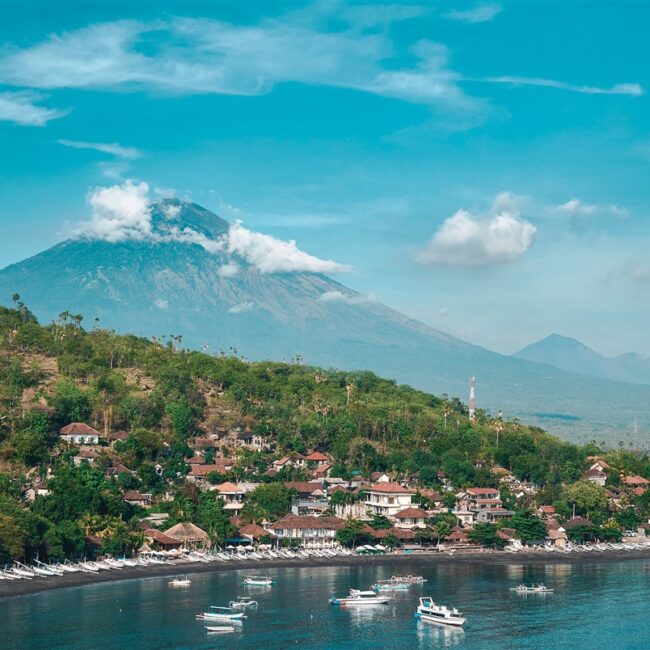
When traveling, it’s important to know whether the local tap water is safe to drink, as this can seriously affect your health. In this blog, we will explore the quality of the tap water in Colombia. Colombia is a difficult country to navigate when it comes to whether or not you can drink the tap water. There are some significant differences between the cities and the countryside. And then again, not all cities have decent drinkable tap water. This guide will show you everything you need to know to make informed decisions! Here we go!
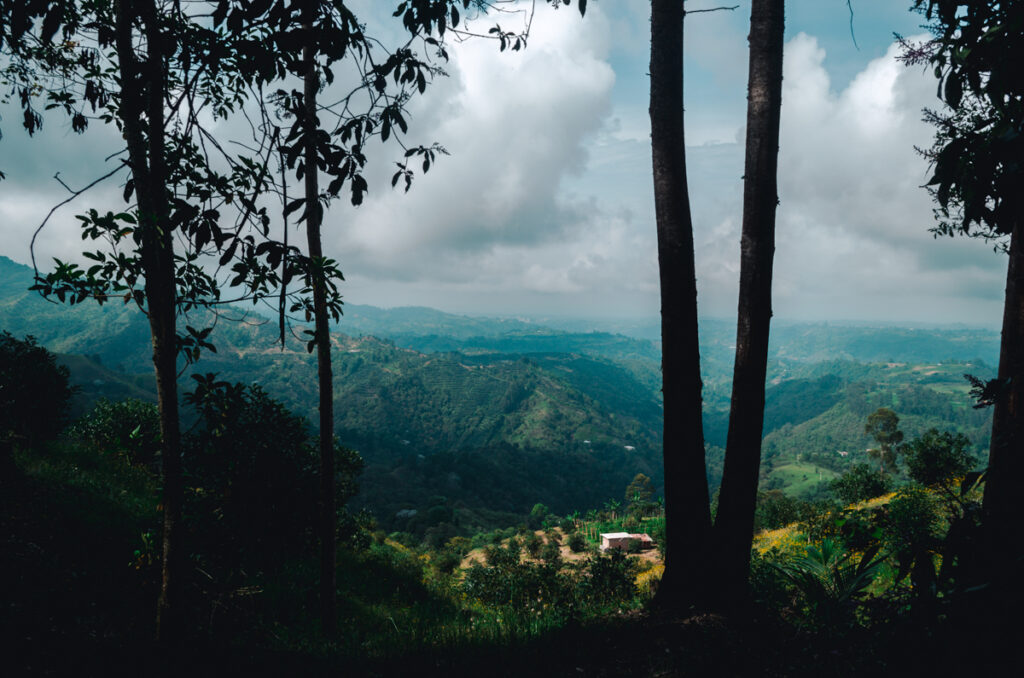
Salento, Colombia
Colombia is one of the most diverse countries in the world. From its vibrant cities like Medellin and Bogota to gorgeous natural attractions, Colombia really has something for everyone.
You’ll likely start your trip in Bogota, the charming capital that will surely steal your heart with a bunch of amazing activities like La Candelaria district, Monseratte Mountain, and the Paloquemao Fruit Market.
From there, the possibilities seen endless. Head to Neiva, to visit the desert-like landscape of Tatacoa, explore the coffee triangle of Colombia where you can find cute cities like Salento, Pijao and Filandia or explore Colombia’s ‘Pueblos Patrimonio’, like Buga, Villa de Leyva and Barichara.
Looking for a tropical escape? Head to the Pacific to spot humpback whales or spend some time on the Caribbean Coast in hipster Palomino or off-the-beaten-track Dibulla.
But, this post was about the tap water in Colombia! Here’s what you need to know.
Even though a lot of posts say that you can generally drink tap water in Colombia, I’d rather say: No, in most places, you can’t drink tap water in Colombia.
Colombia’s situation is a bit complex and it really depends on where you are going. The good news is that big cities like Bogota and Medellin have decent water treatment plants and the water is generally safe to drink there.
However, when you venture into more rural areas of Colombia, I wouldn’t advise you to drink the water. Even in mountainous parts of Colombia with spring water, the water is not safe.
For instance, I asked my host Marta in Salento why the water was not safe to drink there and she said it was contaminated with pesticides that were used in the mountains to grow avocado trees for export to Europe.
The most smart thing you can do in Colombia to ask locals or check with your accommodation about the safety of tap water in the area you are visiting!
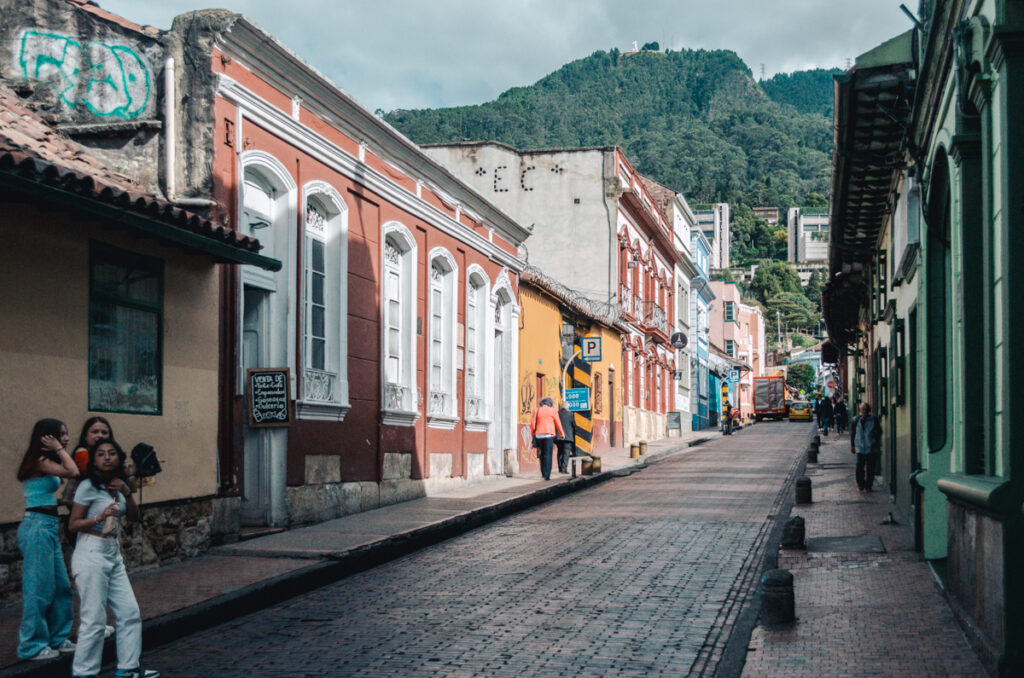
Streets of La Candelaria, Bogota, Colombia
In the bigger cities of Colombia, tap water is generally safe to drink. They have decent to excellent water treatment facilities and the locals will tell you that the water is perfectly safe to drink.
You can generally drink tap water in Bogota. The tap water in Colombia’s capital is considered fairly good for consumption as it meets international standards for water quality.
Bogota’s water treatment system is advanced and it ensures that the tap water is thoroughly purified and chlorinated, eliminating harmful bacteria and pathogens.
It is generally safe to drink the tap water in Medellin. The city’s tap water is treated and is considered to meet international quality standards.
However, it’s important to note that, while the water is theoretically safe to drink, you may still experience mild stomach discomfort due to differences in water composition if you have a sensitive stomach.
Also, I found the clean water in Medellin to taste too chlorinated! You’ll have to see for yourself if you can handle the taste.
Aside from Bogota and Medellin, there are a few other cities in Colombia where the tap water is considered safe to drink. these cities include Cartagena, Barranquilla, Cali, Bucaramanga, Manizales, Pereira, Armenia and Tunja.
As there are so many cities where the water is potable, don’t forget to bring a reusable water bottle! I like the ones from Kleen Kanteen.
In smaller towns and rural communities, it is advisable to drink bottled or filtered water. You can always ask the locals but, even if they drink from it and don’t get ill, that doesn’t mean you won’t.
A good rule of thumb is to ask about this at your accommodation. In San Gil, our host provided us with filtered tap water because drinking it from the faucet was not safe. But most of the time, unfortunately, you’ll need to buy bottled water.
→ Also read: Cocora Valley, Colombia: All You Need to Know
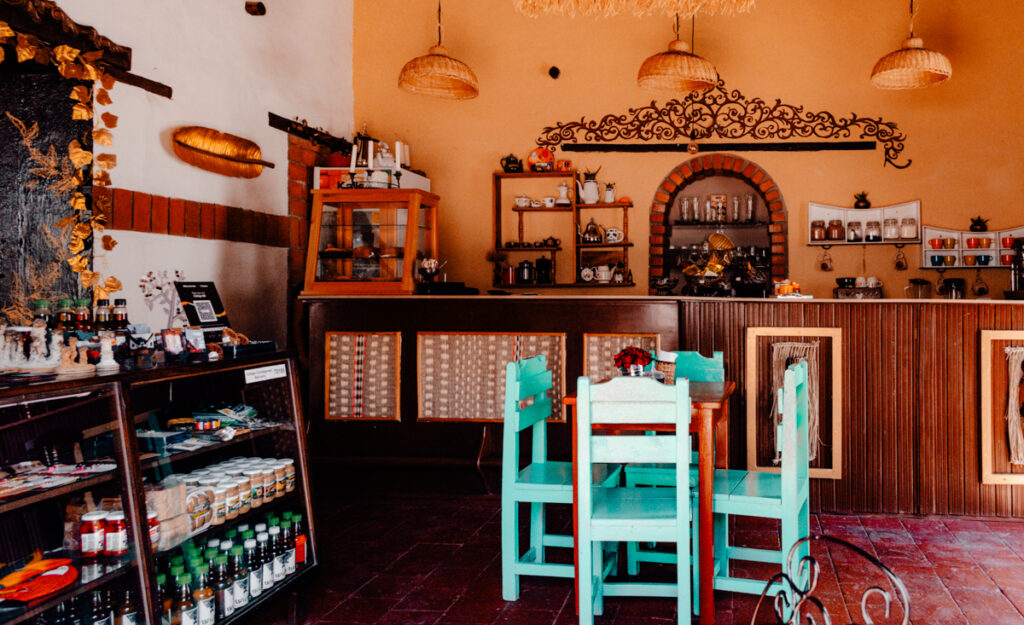
Local Café in La Playa de Belen
In Colombian restaurants, water is not customarily provided for free as it is in some other countries like the US and France. Typically, if you ask for water in a restaurant, they will provide bottled water, and charge you for it.
While tap water in many Colombian cities, including Bogota and Medellin, is considered safe to drink, it’s not common for restaurants to serve tap water to their customers.
That said, local restaurants may not serve free tap water but a free drink is most of the time included in the price if you order a cheap menu del dia. A menu del dia includes soup, a main course, dessert and a drink and costs range from 10 000 to 20 000 COP.
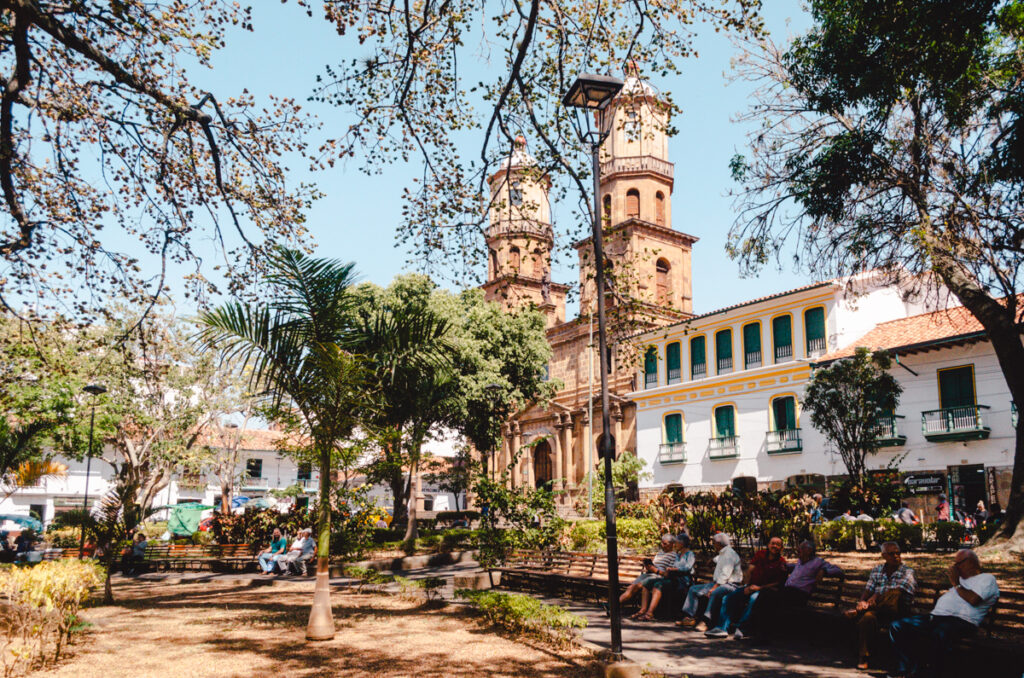
The main square of San Gil in Colombia
While tap water is safe to drink in major cities like Medellin, Cartagena, and Cali, it’s not potable on the countryside and at most places along the coast.
Here are two good alteratives to still consume tap water outside of the bigger cities!
Boiling the tap water is a good method to make it safe for drinking in Colombia. Boiling the water kills most pathogens, including bacteria, viruses, and parasites, that might be contaminating the water.
We used boiled tap water at most of the location we went to in Colombia and never felt ill after consuming it. We also used it to boil our potatoes, rice or pasta and to make coffee and tea.
Using a water filter bottle is another great option to ensure that you have safe drinking water while traveling in Colombia. It’s hard to understand why not everyone is using them in areas without potable tap water supply!
They are designed to remove bacteria and most of them remove viruses too, making the tap water safe to drink. If you are interested in buying one, I can highly recommend Grayl.
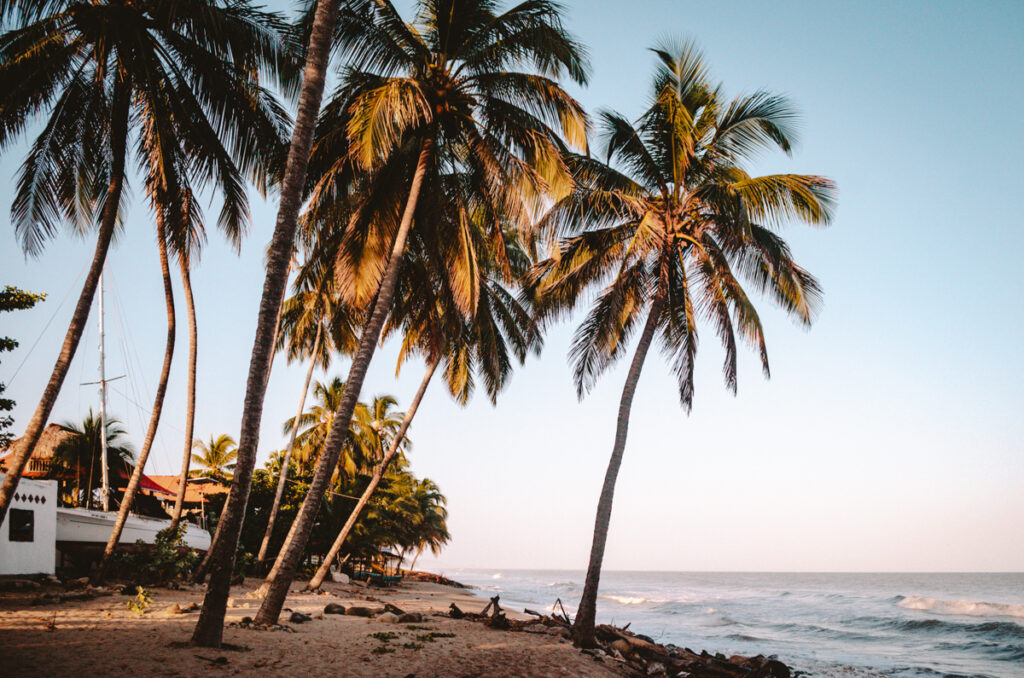
The beach of Dibulla
Tap water is safe to use to brush your teeth is the bigger cities I mentioned before but I would advise against it in smaller cities and rural areas. I mean, even if you don’t swallow it, why take the risk, right?
Most accommodations will provide a small water bottle in your room that you can use to brush your teeth. Furthermore, plenty of accommodations also provide filtered water free of charge that you can use to brush your teeth.
Here are the websites I use when I travel to Colombia:
Booking.com: For the best guesthouses, homestays, or small hotels
Hostelworld: To find the best hostels located in the cities
Homestay: For a unique immersive homestay experience in the big cities or the countryside
Busbud and Redbus: The best transport websites for long-distance buses in Colombia. Note that 12Go also works in Colombia but the tickets they will buy for you are open-seat tickets and don’t guarantee a seat on the bus you book online.
Uber: Uber is a convenient and cheap ride-hailing app that can be used in the bigger cities of Colombia. Other apps are Cabify or Didi.
Skyscanner: For affordable flights to Bogota and intercity flights in the country.
Viator and Get Your Guide: book all kinds of activities from the Ciudad Perdida trek to a guided private tour of Comuna 13 in Medellin.
Citizens of many countries, including the United States, Canada, the European Union, Australia, and New Zealand, do not require a visa for short tourist stays (typically up to 90 days). However, this can vary, so it’s always best to check iVisa for the specific requirements for your nationality.
If you’re looking for travel insurance, the one with the best benefits online is undoubtedly Heymondo! It’s very easy to ask for a quote on the website and, if you book with this link you’ll get 5% off!
Access mobile data immediately when entering the country with a Colombian E-sim or a Latamlink E-sim when traveling through multiple countries. If you are already in Colombia, the best local prepaid sim card is Claro.
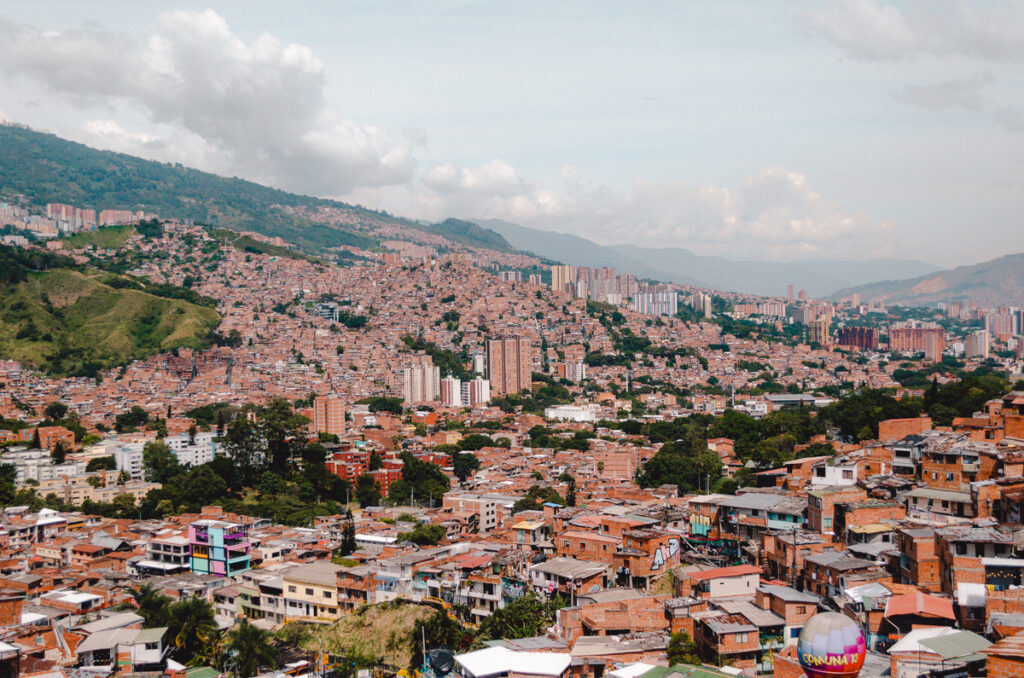
Medellin seen from Comuna 13
Ha, the dilemma about ice cubes! Well, generally, you can count on ice cubes to be safe, especially in cities and places where tourism is developed.
However, my partner and I caught a stomach bacteria in Colombia and we are sure it was due to ice cubes. We were already on the road for about five weeks in Colombia, having drinks with ice cubes without issues.
But this changed when we had a vegan Colombian meal, with cold agua panela included, at a bus stop somewhere between Medellin and Santa Marta. We arrived in Santa Marta with stomach cramps and had to spend two days feeling ill in our hotel room. Be careful!
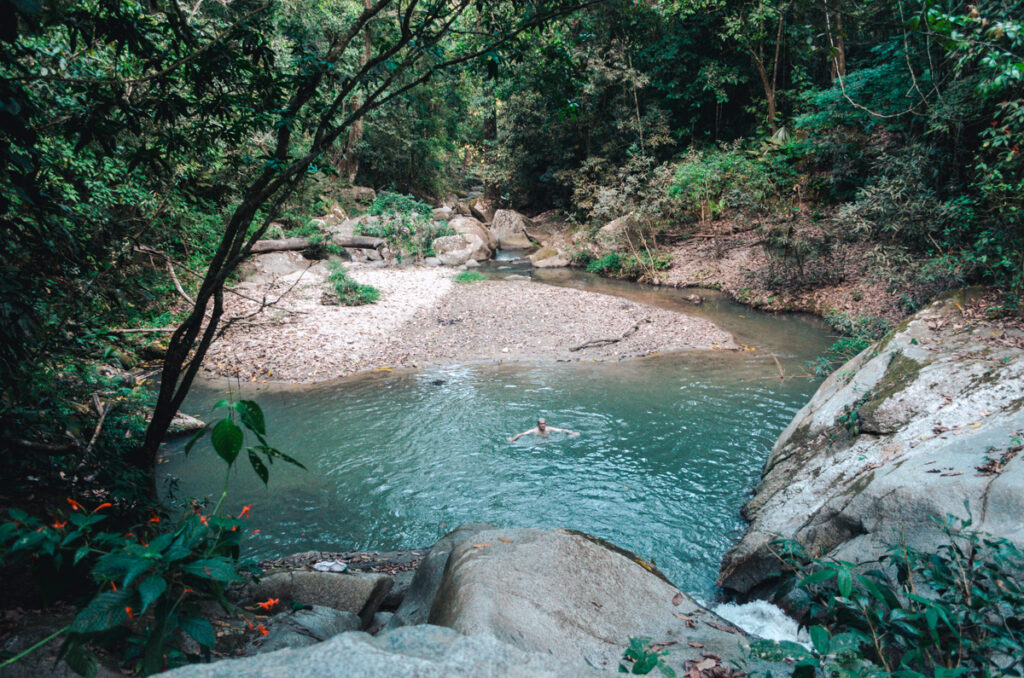
Oido del Mundo, a waterfall in Minca
There are several bottled water brands that are popular and widely available in Colombia. If you prefer bottled water over (boiled or filtered) tap water, here are some brands to consider:
When you buy bottled water in Colombia or anywhere else, please think about the environmental impact of single-use plastic.
Sometimes, there’s no other possibility then to buy bottled water but you can come a long way with a filter system like Grayl.
There you go! We are at the end of this post about whether or not you can drink tap water in Colombia. As you can see, it depends on where you are in this Latin American country. While it’s safe in the cities, it’s not in the rest of Colombia.
No matter where you go, it’s always a good idea to take a water filter with you or to boil the water. Then, you’re good wherever you are!
Let me know in the comments below if you have any questions or drop me a message through my contact page.
Also, don’t forget to check out my resources page with my favorite booking platforms and tips to start planning your trip. Additionally, have a look at my favorite travel gear if you want to pack more consciously!
ENJOY!
Disclaimer: This post may include affiliate links. If you click on them, I may receive a commission at no extra cost to you.
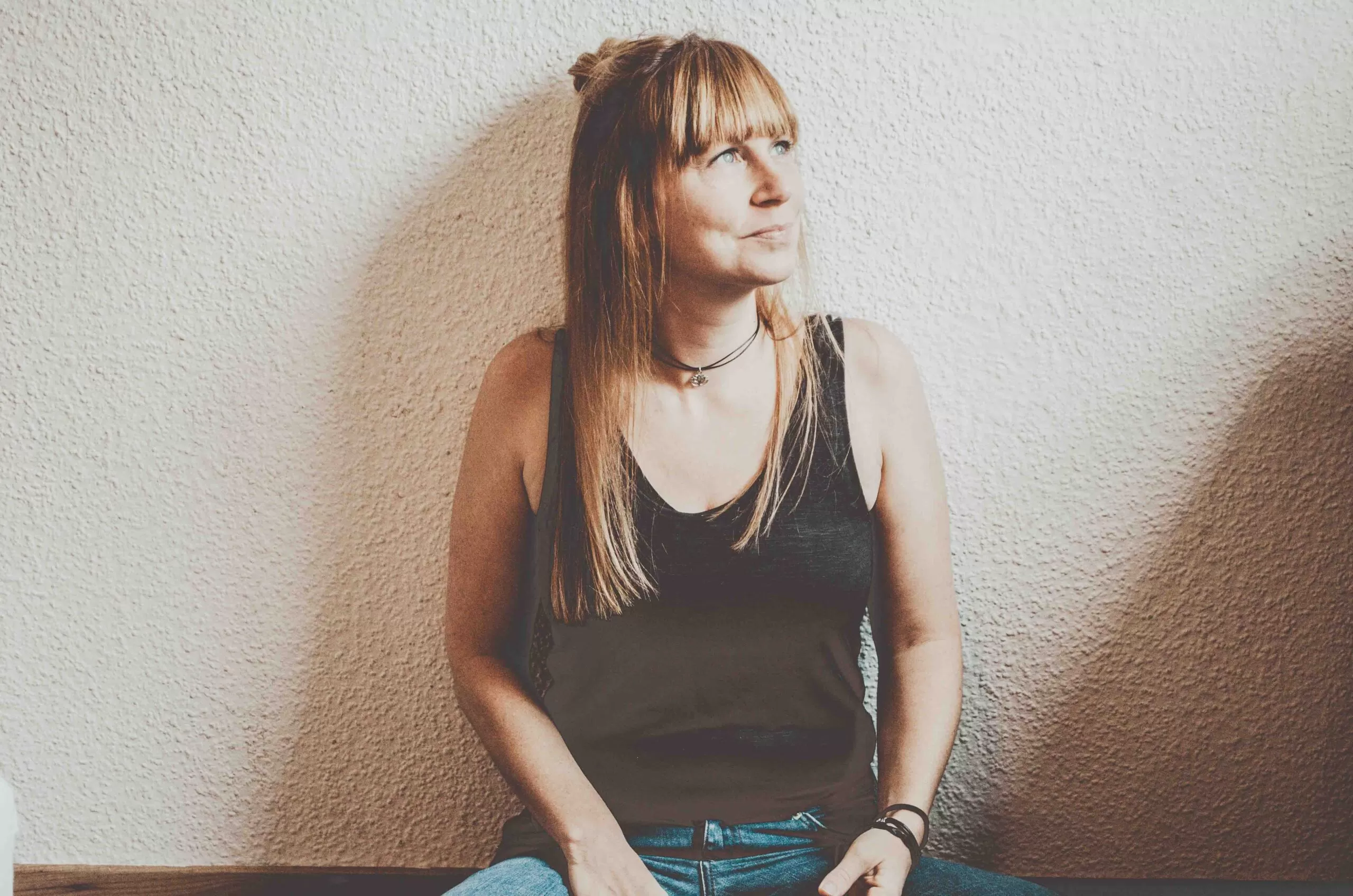
Hi! I am Annelies and this is Travelers & Dreamers, a blog about conscious travel which means traveling in a more mindful way, with a positive impact on the world and yourself!
On this website, I cover different topics like slow travel, plant-based food guides, responsible travel, sustainable packing, eco-travel, and more!
Latest Posts

Can You Drink Tap Water in Bali? What You Need to Know!
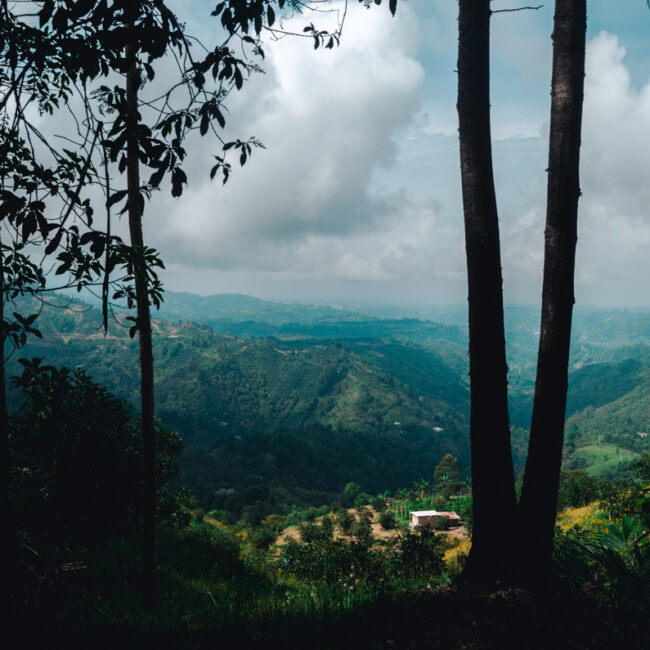
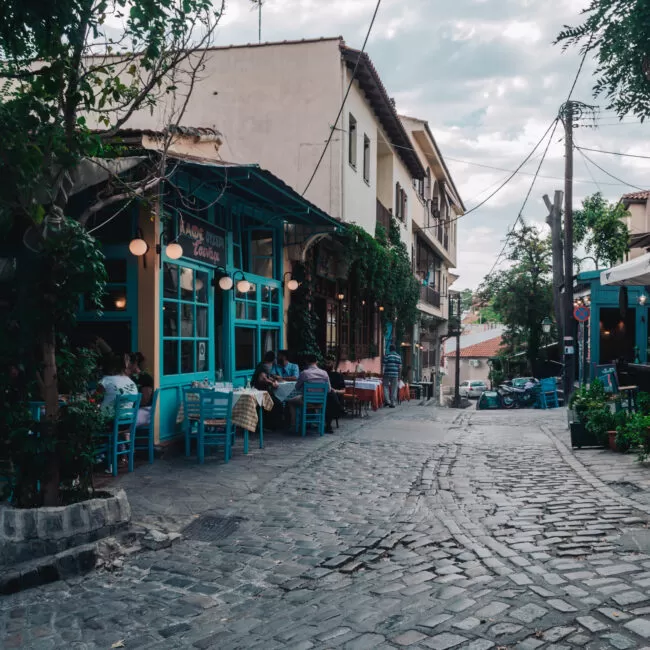
Vegan in Greece: A Complete Travel Guide For 2024!
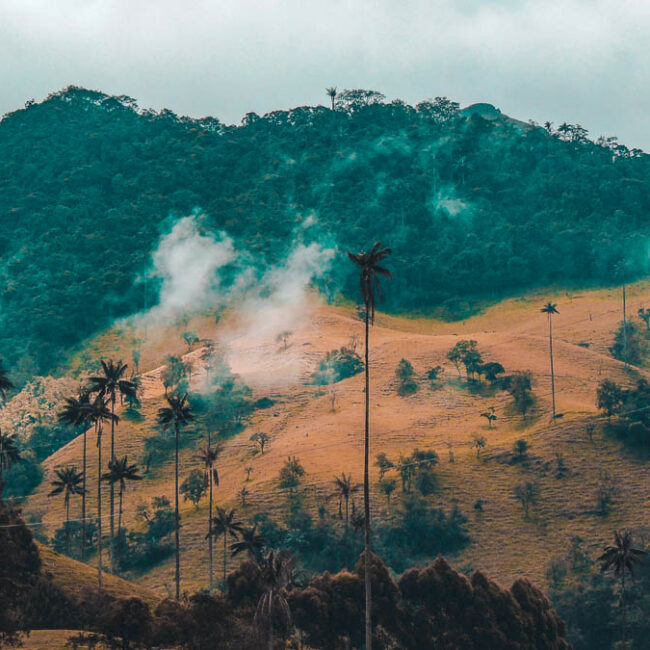
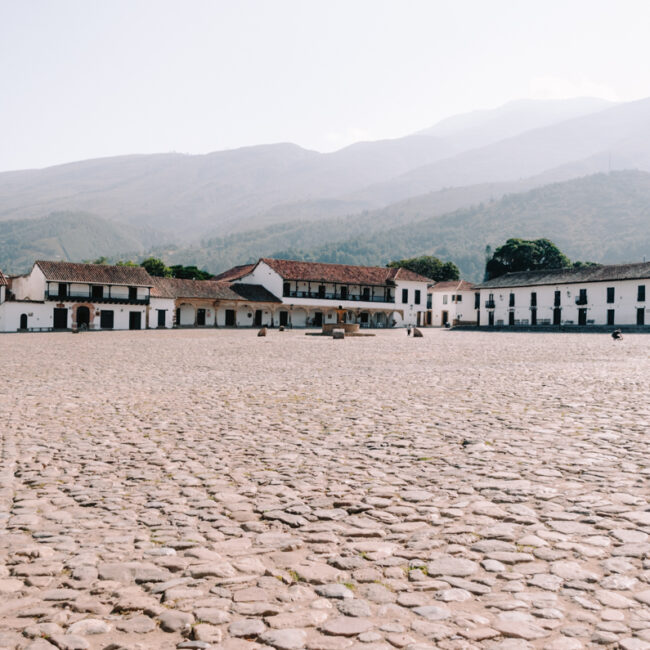
Villa de Leyva, Colombia: A Conscious Travel Guide
Do you want to receive my latest finds on conscious and sustainable travel directly to your inbox? Subscribe here!
© COPYRIGHT TRAVELERS&DREAMERS, 2023.